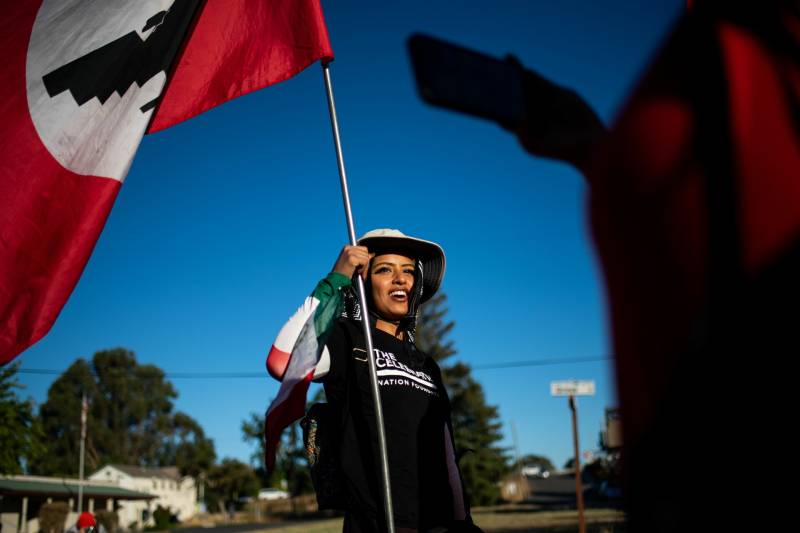Impassioned protests. An ongoing pandemic. Reckonings with history. And amid it all, celebrations of life, joy and resistance.
2022 offered no shortage of indelible images in the Bay Area. Keep reading to see a selection of photography by KQED's News Photographer Beth LaBerge, alongside work by KQED's Aryk Copley, Amaya Edwards and Marlena Sloss.
Words below by Lesley McClurg, Annelise Finney, Spencer Whitney, Matthew Green, Marisol Medina-Cadena, Gabe Meline, Jaclyn Diaz, Carlos Cabrera-Lomelí, Carly Severn, Lindsay Gauthier, Nastia Voynovskaya, Scott Shafer, Amaya Edwards, Cesar Saldaña, Lakshmi Sarah, Sara Hossaini, Anaïs-Ophelia Lino and Daisy Nguyen.
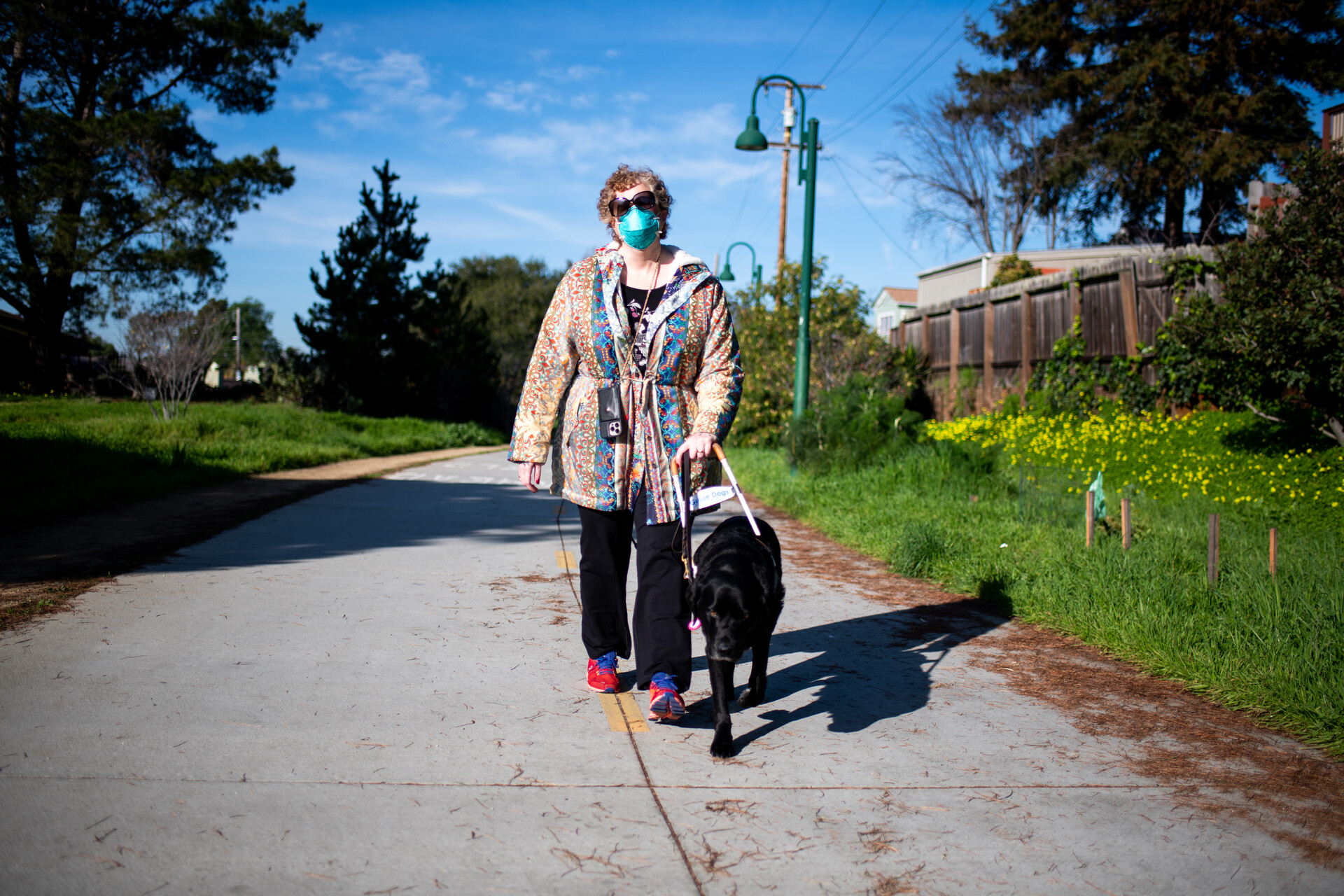
As the omicron surge ended in early January of 2022, COVID-19 continued to be a challenge, especially difficult for the roughly 7 million immunocompromised Americans. Among them was Sassy Outwater-Wright. Her 39-year-old body is also very fragile.
Right when COVID hit in the spring of 2020, the Berkeley resident started feeling an agonizing pain in her head and face. Doctors discovered a very aggressive soft-tissue cancer creeping toward her brain. Radiation and chemotherapy treatment wiped out her white blood cells, and therefore her immune system. Leaving the house, let alone taking an Uber to and from the hospital for screenings and checkups, was and still is terrifying for her. Public transportation is still out of the question.
Read 'Risk No Matter Where I Go': For Many Disabled People, a Future of Ever-Present COVID Is Daunting
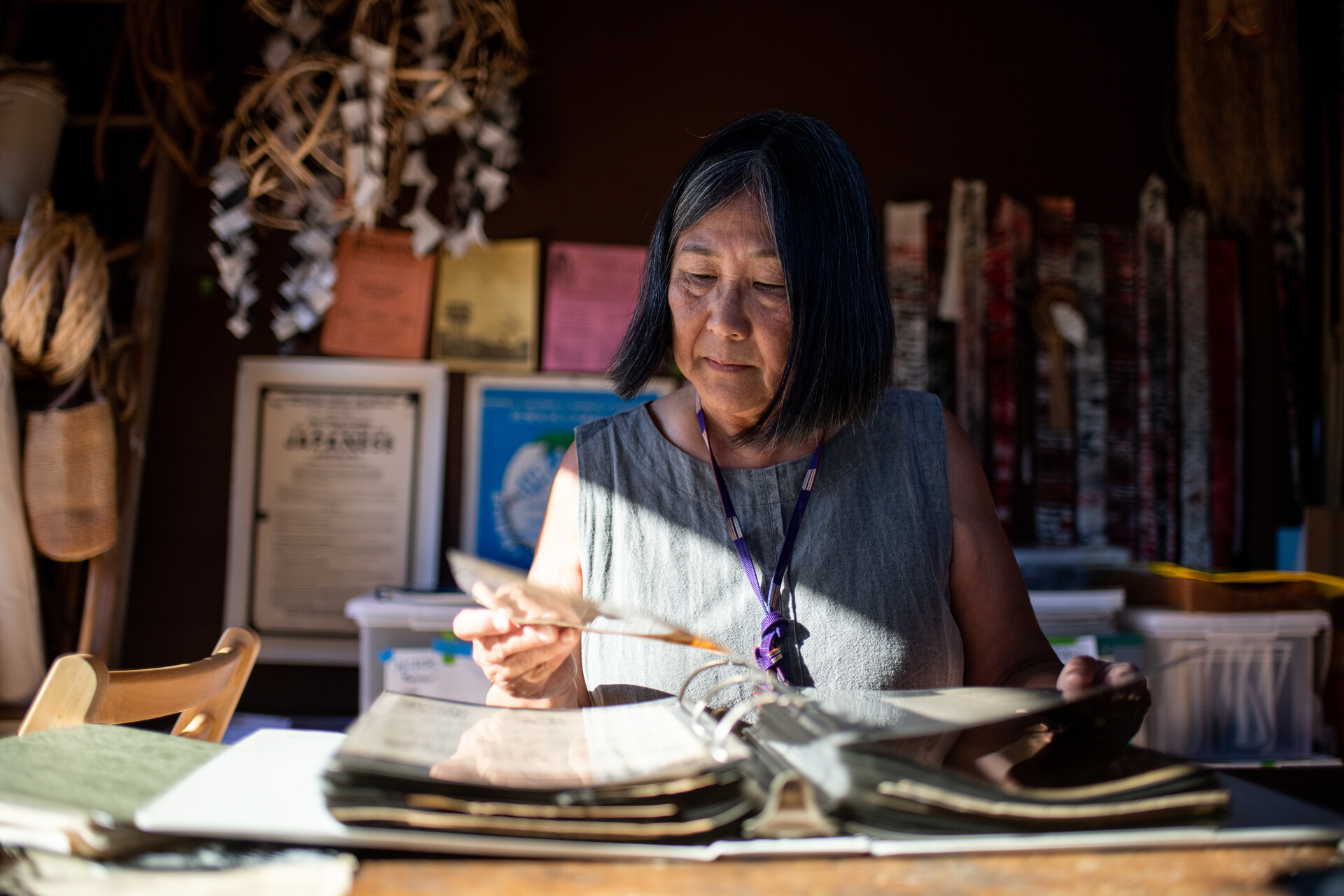
In 1981, Naomi Kubota Lee, then a UC Berkeley undergraduate student, was the co-chair for the San Francisco branch of the National Coalition for Redress/Reparations, a Japanese American grassroots organization that organized people to testify at the commission hearings. Lee’s parents and grandparents were incarcerated at Topaz War Relocation Center in Utah.
Lee keeps an archive from the hearings, filled with transcripts of testimony and handbills, stored in three rows of filing boxes in a studio in her Mill Valley home. She remembers sitting in the audience, surrounded by other Japanese Americans, listening to people describe their experiences, in some cases, for the very first time. The rapt audience cheered for the speakers, while also weeping with them. “It’s really quite an emotional process when I reopen and read some testimonies here and there,” Lee said.
Read How Japanese Americans in the Bay Area Are Carrying Forward the Legacy of Reparations
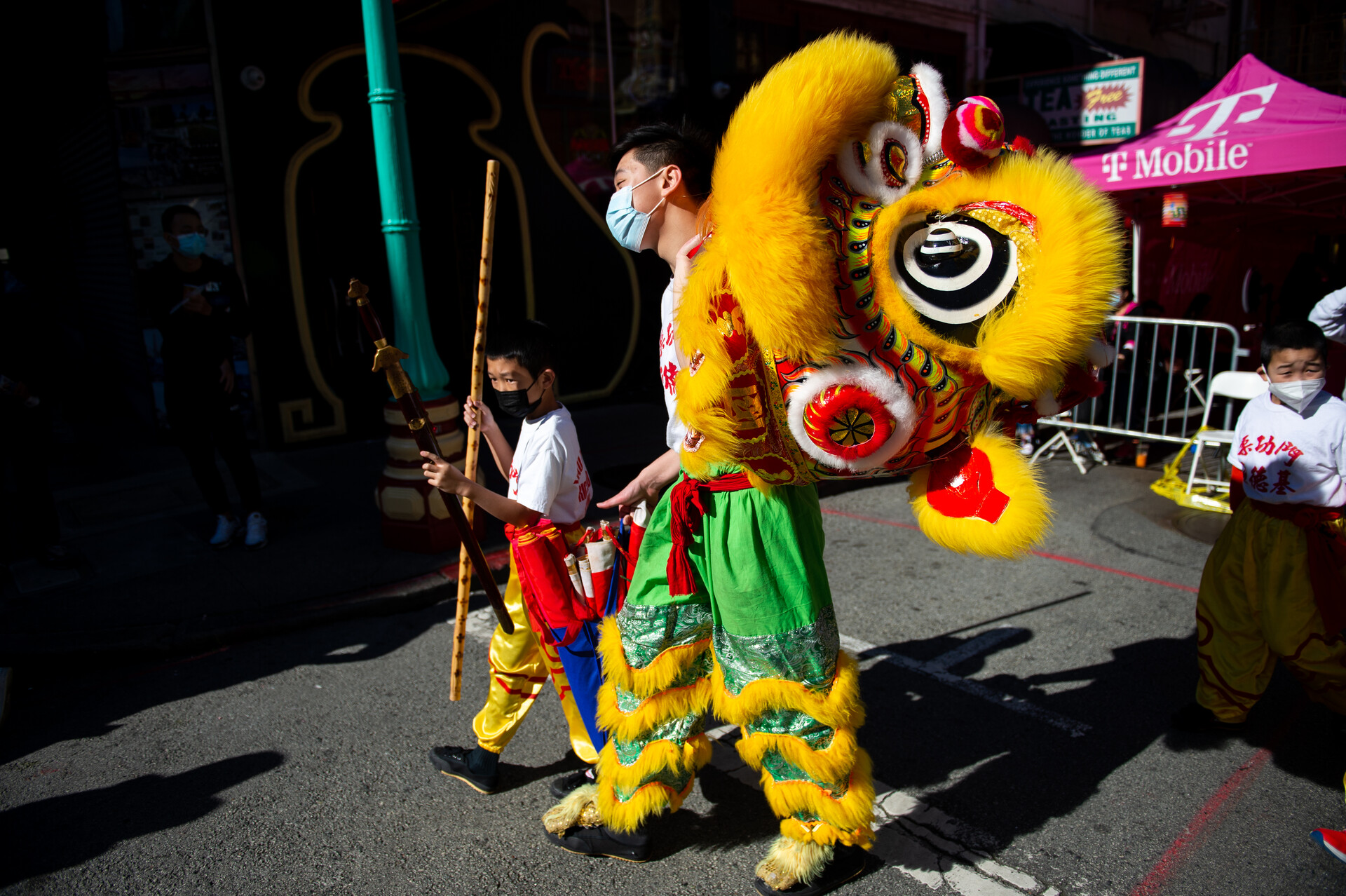
“The Lunar New Year parade is about bringing out positivity and hope for community,” said Richard Ow, referred to as "sifu," meaning teacher. Students at the Yau Kung Moon School learn the fundamentals of the Yau Kung Moon style, and the Nam Si Buk Mo lion dance style.
“For the performance, we bring in members that have been with us for 22 years, and it’s like a family gathering again,” Ow said. “People still come out rain or shine. We represent our community positively in Chinatown.”
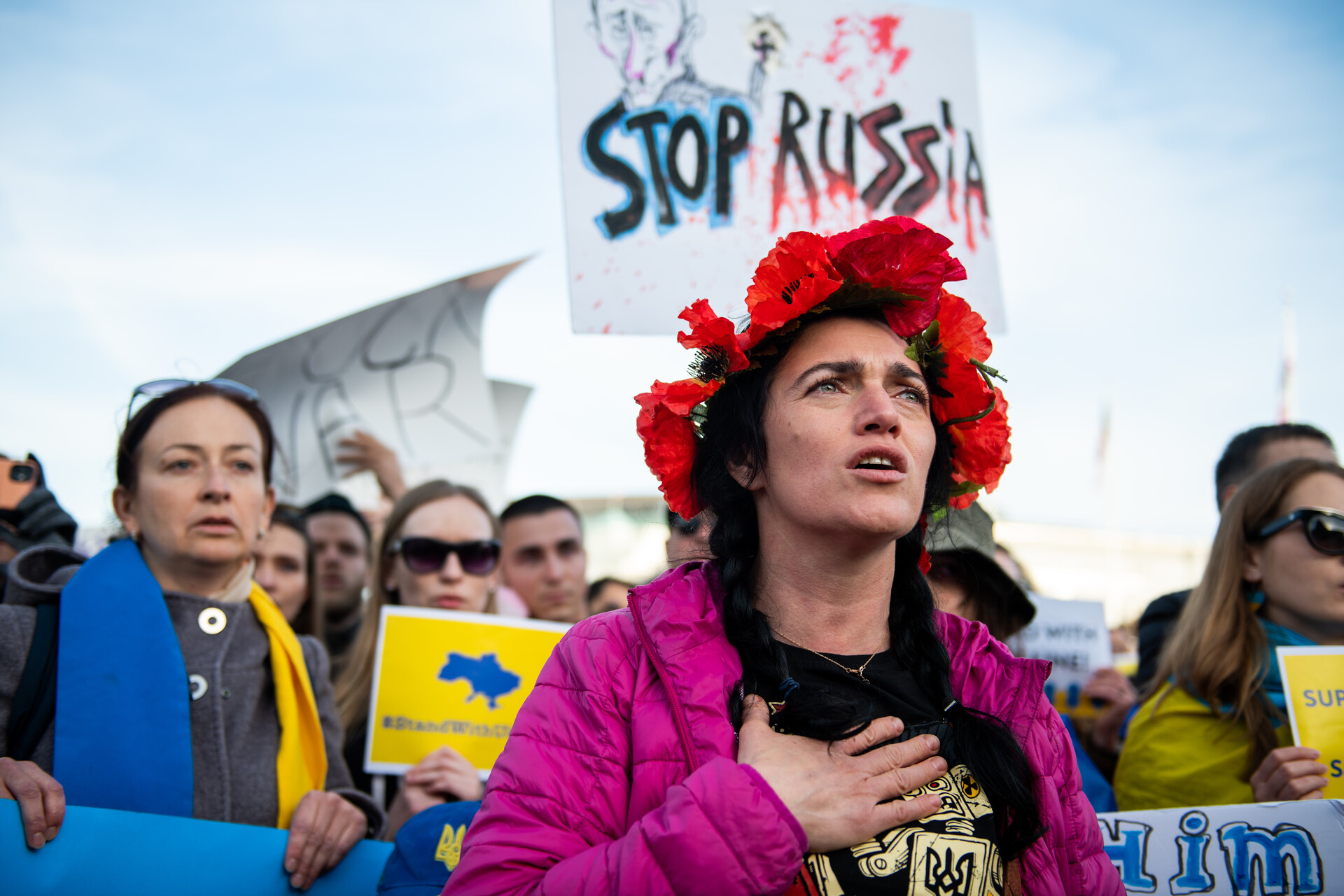
Russia commenced its attack on Ukraine early on the morning of Feb. 24, unleashing a barrage of airstrikes on cities and military bases and sending in troops and tanks from multiple directions, as civilians piled into trains and cars to flee.
Later that same day, hundreds of people gathered outside San Francisco City Hall to protest the invasion. There are roughly 20,000 people of Ukrainian descent living in the Bay Area, according to the Ukrainian consulate in San Francisco.
Read 'I'm Devastated': Bay Area Ukrainians React to Russian Invasion of Their Homeland
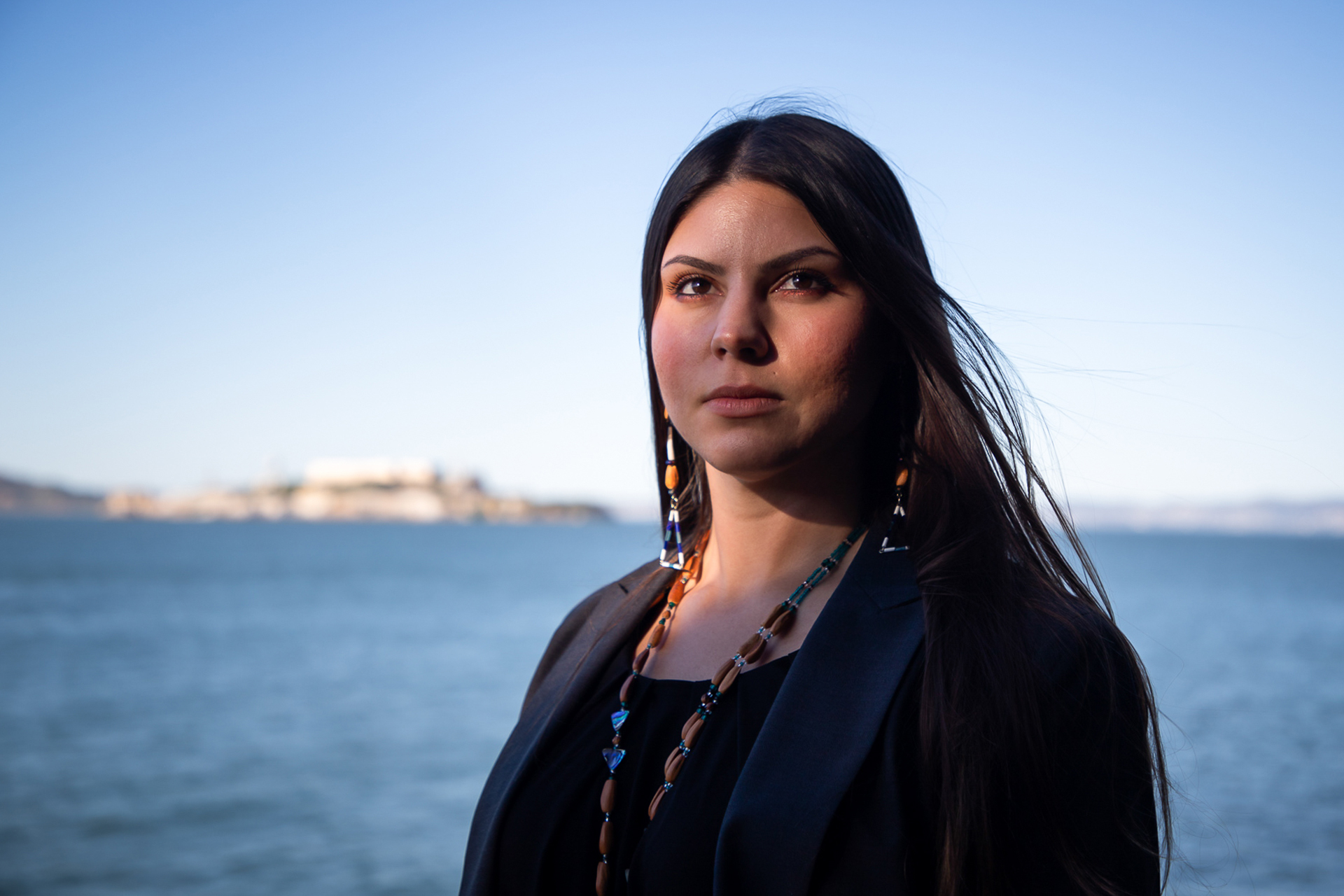
In 2020, the American Indian Cultural District was created in La Misión in San Francisco — a home base for the Urban Native community. Rightnowish introduces us to the people behind this cultural district, including Sharaya Souza.
"What people don't know is that at one point, the Mission district was called the 'Red Ghetto,'" said Souza. "At one point, it was a thriving, bustling area of American Indian businesses, organizations and community members. And today, when we look at the data that comes from a map, we still see many of our members actually reside in the cultural district ... It is a continuing history. It is a living history.”
Read 'You're On Native Land' : The Cultural District Honoring Urban Native History
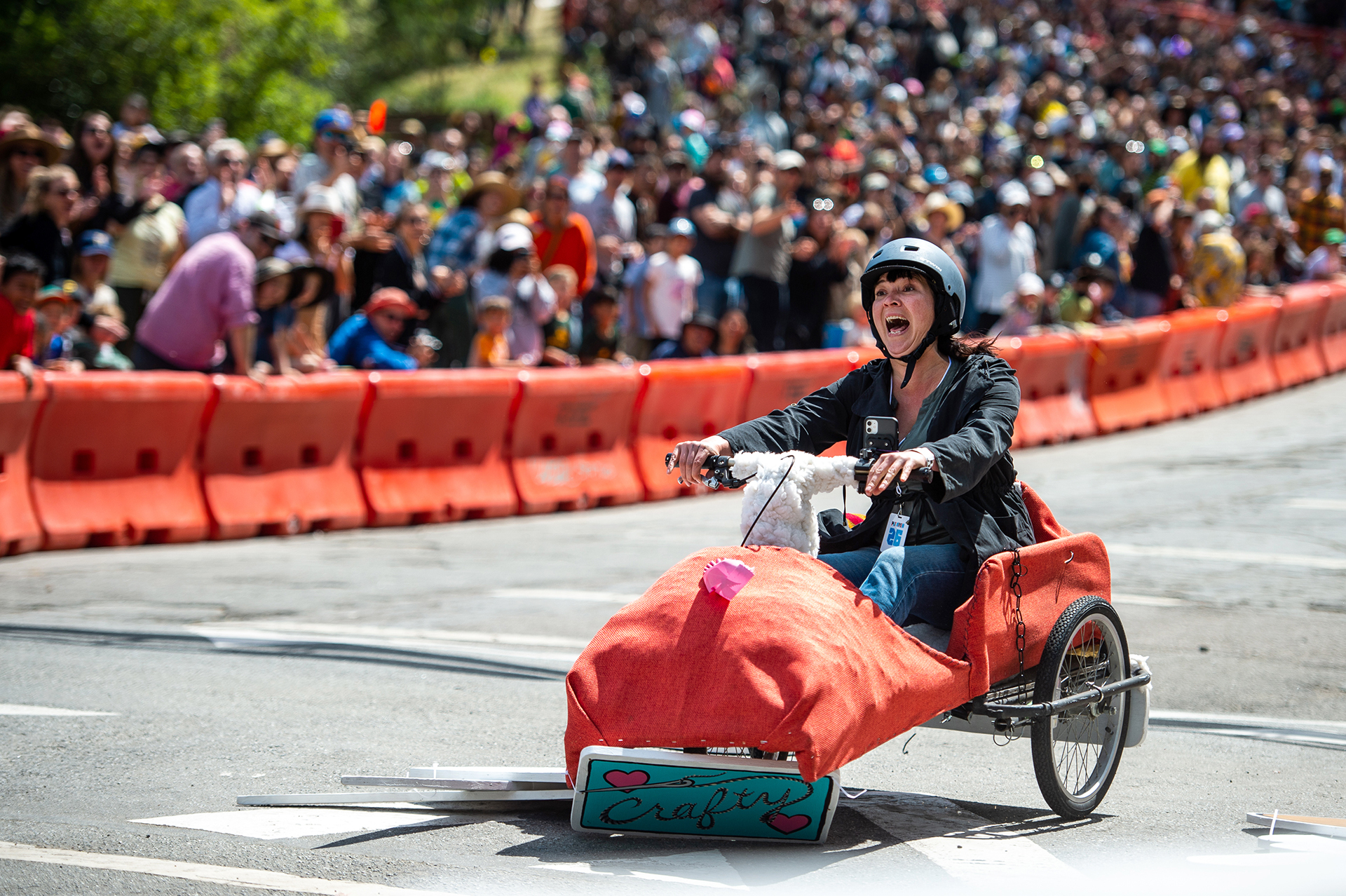
The Soapbox Derby made its grand, colorful return to McLaren Park in San Francisco on April 10 with thrills, hills and spills.
Thousands turned out to see 57 art cars, none of them equipped with engines or motors, hurl (and occasionally crawl) precariously downhill. The races took place on John F. Shelley Drive, an under-maintained asphalt obstacle of a street, complete with potholes, cracks and — presenting a source of sometimes slapstick comedy for the crowd — a speed bump.
Read PHOTOS: The Soapbox Derby's Wild Downhill Action in San Francisco
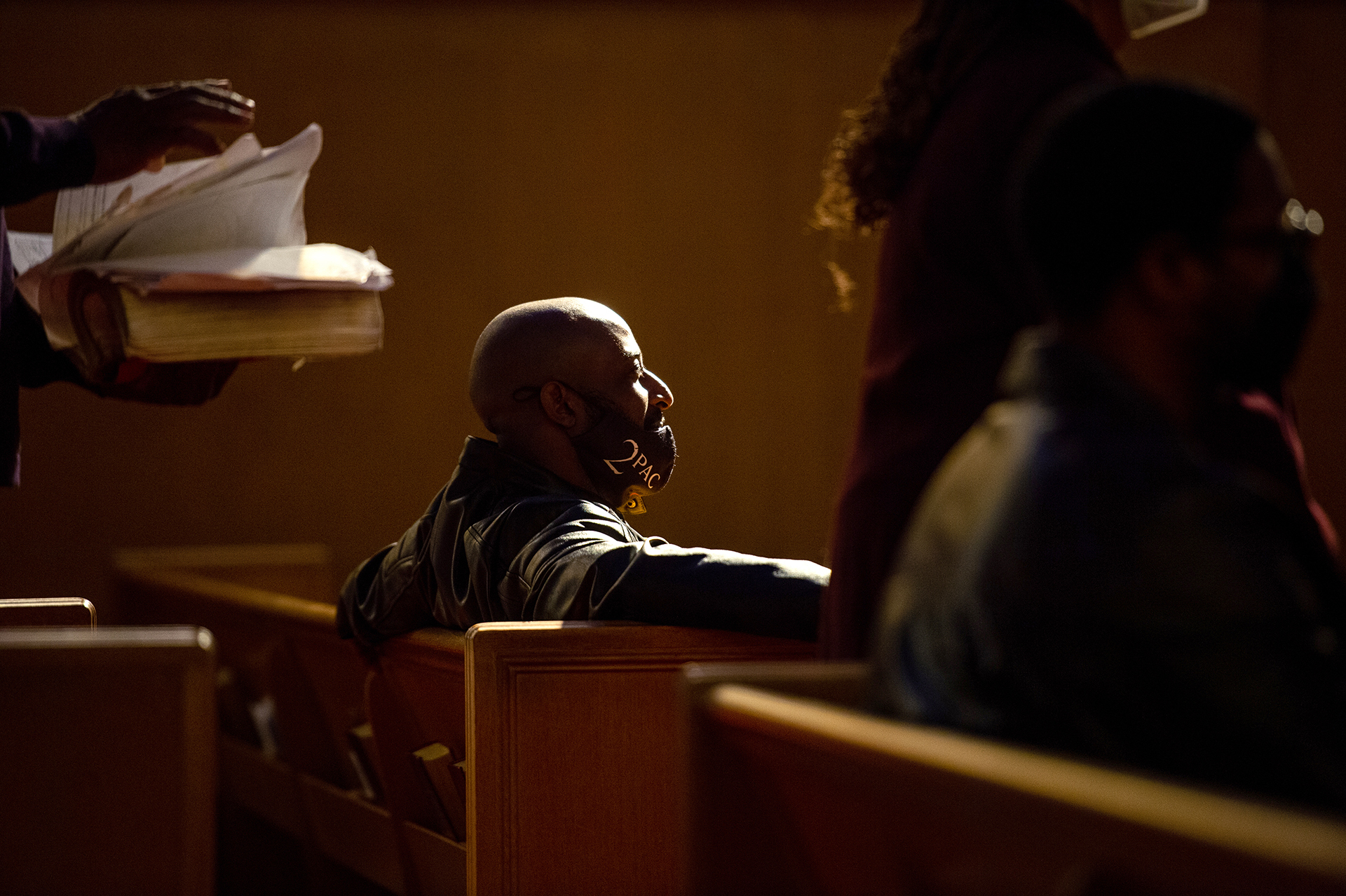
Chris Lodgson, lead organizer of the Coalition for a Just and Equitable California, said that Black Californians who are descendants of U.S. slaves are subject to shocking economic disparities and oppression.
Lodgson told news outlet Axios that this mandate to collect detailed demographic information from state employees will open the door to revealing disparities in income, careers and leadership within California state agencies. "You can't fix a problem until you see it, until you acknowledge it," Lodgson told Axios.
Read California Becomes the First State to Break Down Black Employee Data by Lineage and No, the Reparations Task Force Report Isn't a 'Watershed Moment.' Action Will Be
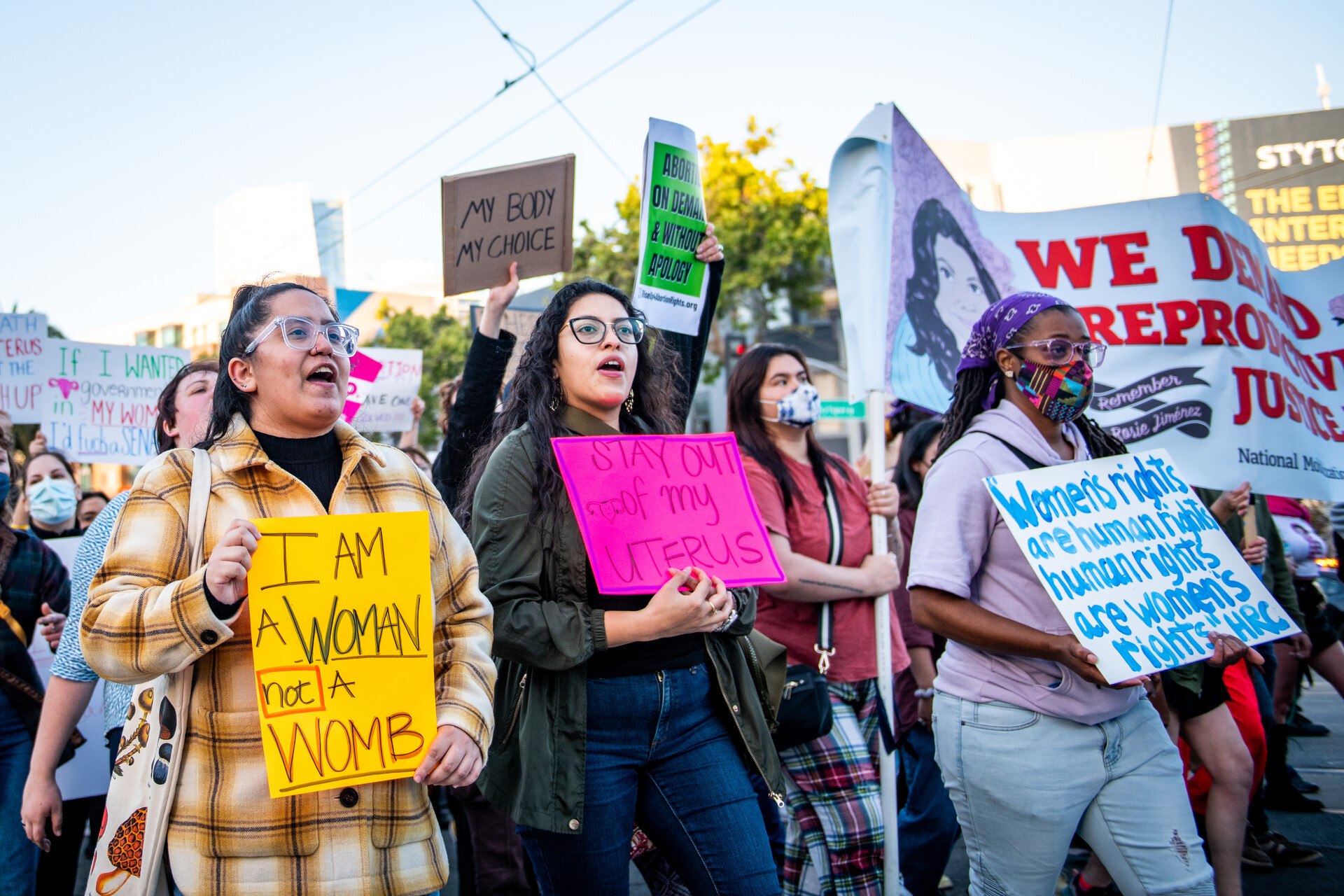
The Supreme Court decision in Dobbs v. Jackson Women’s Health Organization, announced on June 24, overturned Roe v. Wade and eliminated the constitutional right to an abortion.
California guarantees the right to abortion in statute and the state constitution. Our state’s abortion laws are the strongest in the United States. Both officials and abortion providers have made it very clear that abortion access in California will not change because of the U.S. Supreme Court’s decision.
Read With Roe v. Wade Overturned, What's Next for Our Constitutional Rights? and LGBTQ+ Advocates Fear Implications of Overturning Roe v. Wade
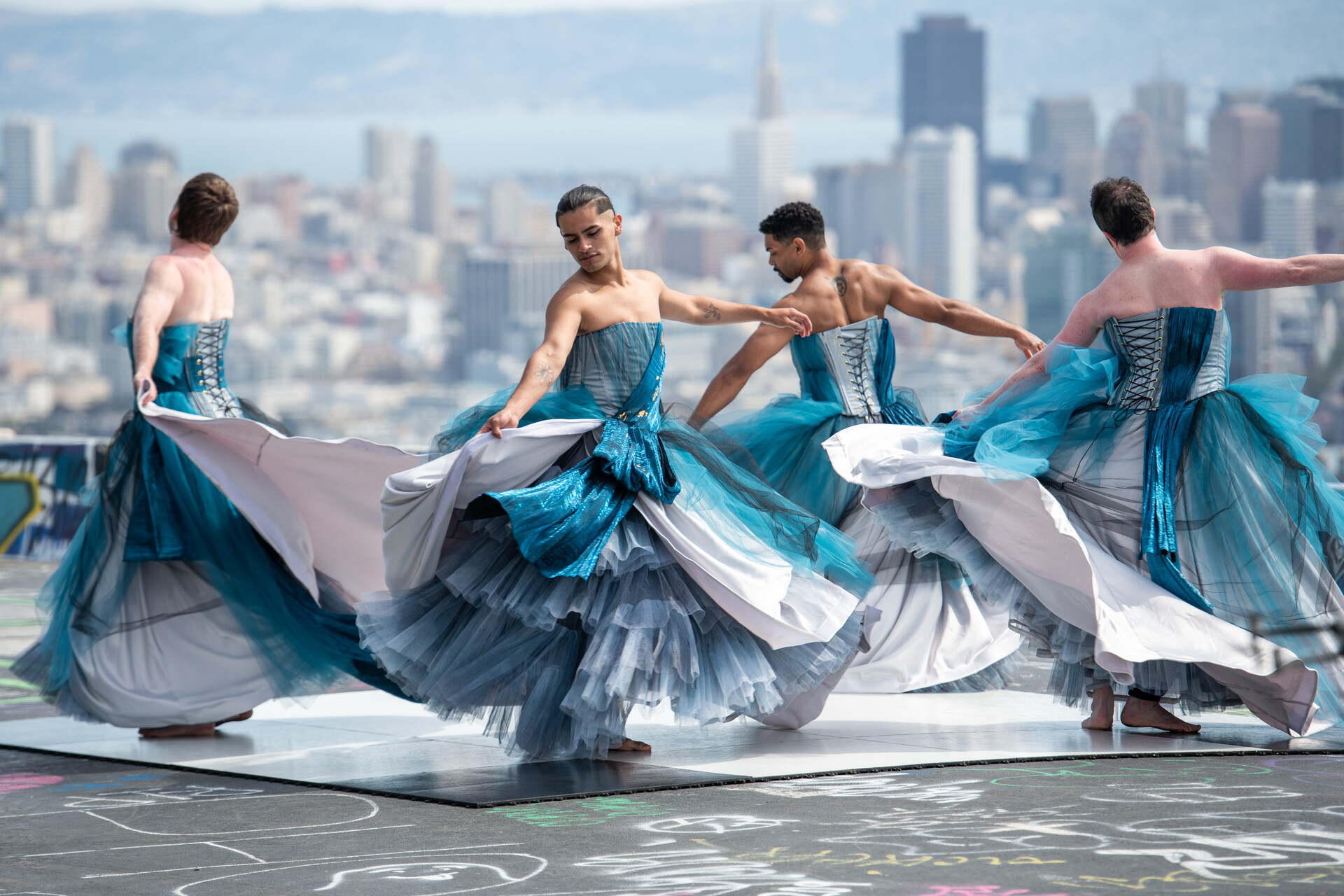
A sense of hope is at the heart of Sean Dorsey’s new work, The Lost Art of Dreaming. It’s also the impetus for a new, forward-looking phase of Dorsey’s artistic life, focused on encouraging trans and nonbinary people to claim their right to a life they love.
“So many trans people are told that we won’t have a future,” Dorsey said. “So many of us are discouraged from dreaming, are discouraged from imagining, finding love, finding community. Dreaming invites us all to imagine expansive futures that are joyful and liberated, and in which we lift each other up with love.”
Read Transgender Dancer Invites Trans and Queer People to Dream Big
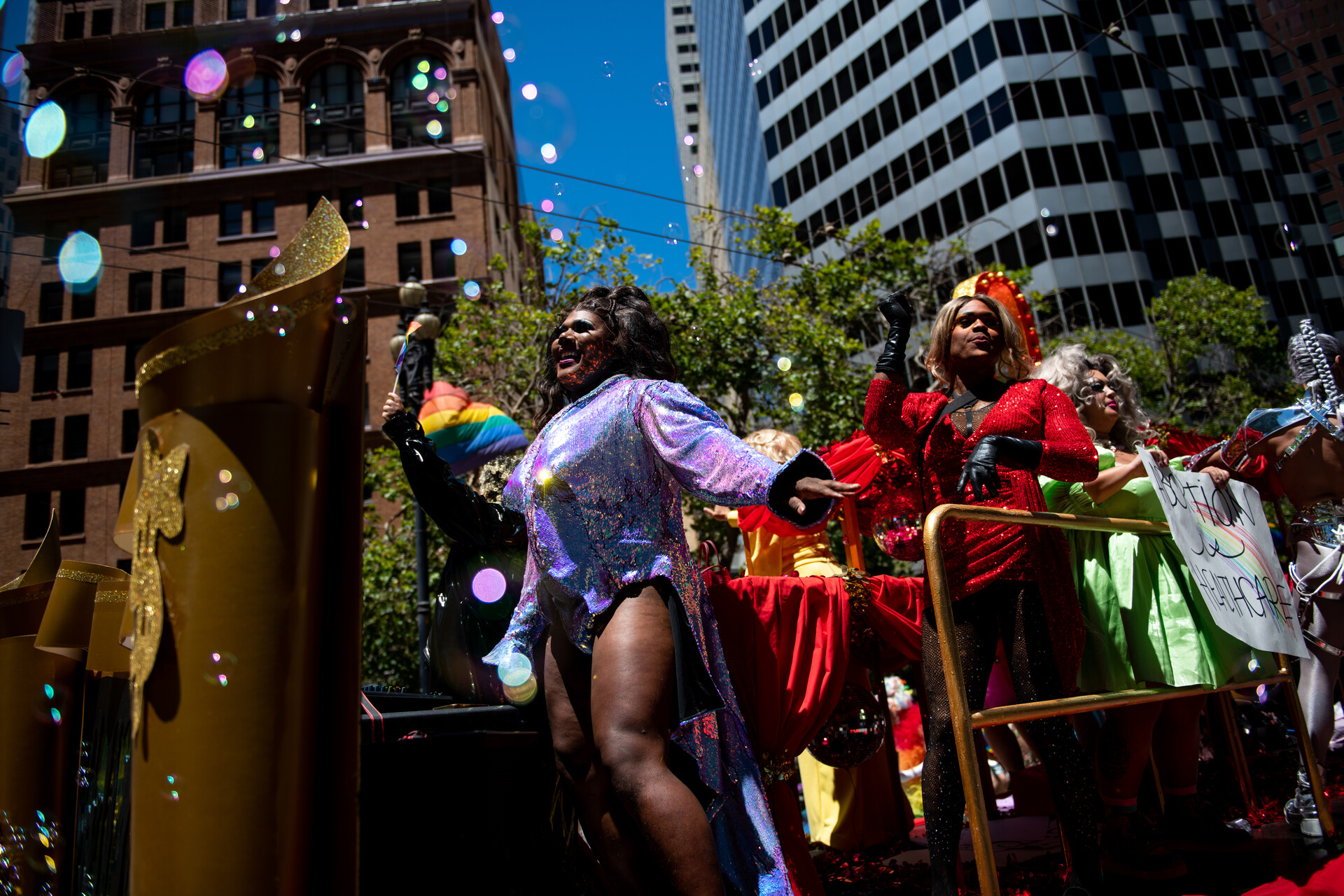
Grief and anger swept the Bay Area as San Francisco headed into Pride weekend after the Supreme Court's decision to overturn Roe v. Wade. But LGBTQ+ people didn’t cower in fear — they celebrated in defiance.
As thousands of people joined the Trans March at Dolores Park on June 24, the day the ruling came down, a queer and trans drum ensemble kept a steady beat while the crowd chanted, “When our community is under attack, what do we do?/Rise up, fight back!” Though Roe is technically dead, and numerous states are legislating against trans health care and other rights, the Trans March didn’t feel like a funeral procession. Instead, it became a ritual transmuting rage into collective power and offering a prayer for the next generation.
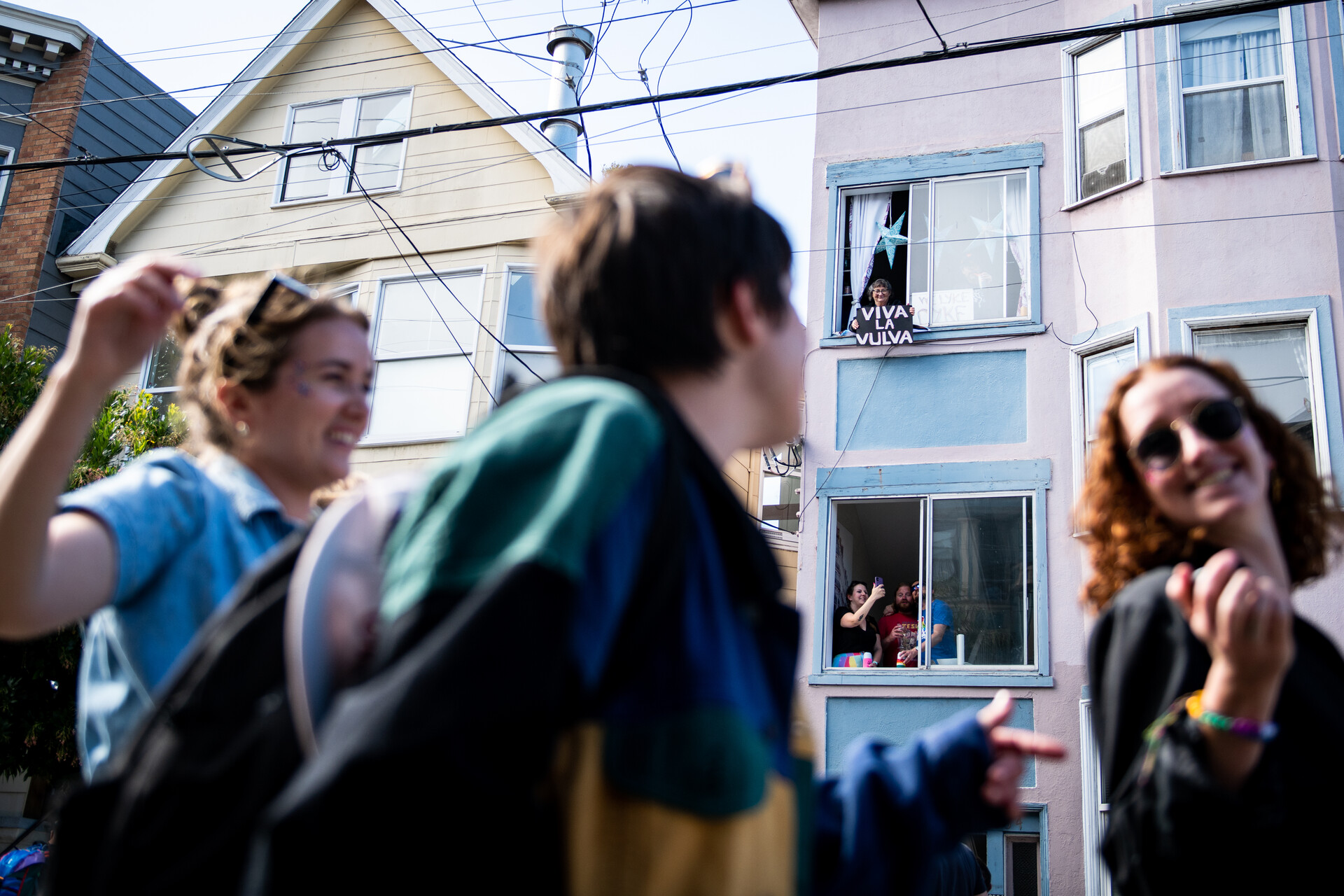
While every few people at the Trans March held protest signs, the Dyke March — which also took off from Dolores Park on June 25 — mostly made a political statement by way of joy, and making people feel seen and heard.
“Being together helps us heal,” an attendee said as the march made its way back from the Castro. The women of the Dyke March cheered and waved to the people partying on their porches and playing disco in their front yards. After the march ended, everyone dispersed into Dolores Park, where hundreds of LGBTQ+ friend groups picnicked, drank and danced.
Read SF Pride Celebrates in Defiance of Attacks on Reproductive, Trans Rights
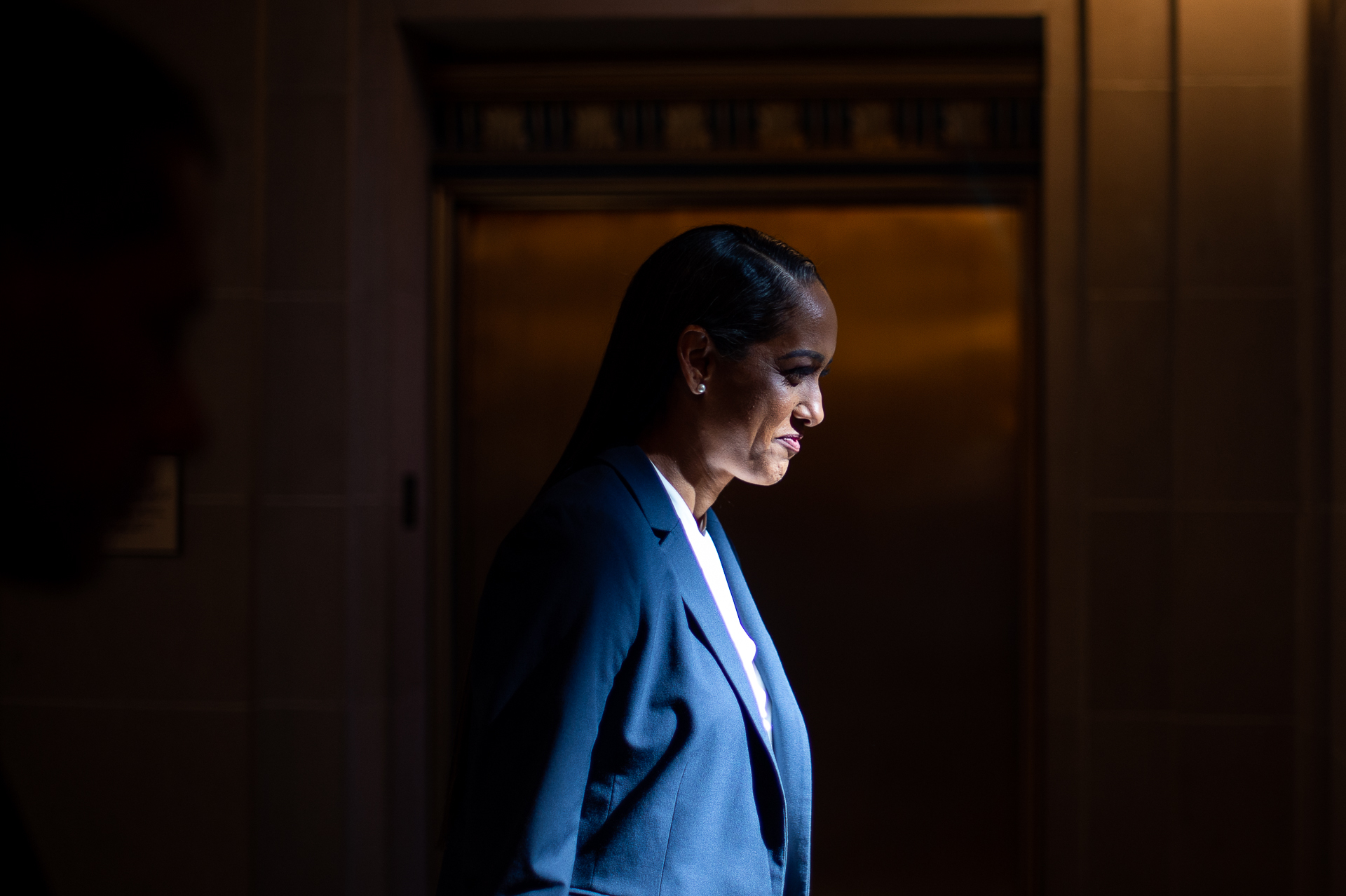
San Francisco Mayor London Breed on July 7 tapped Brooke Jenkins to be the city's next district attorney, choosing a homicide prosecutor who left the DA's office last year and became a leading critic of her former boss Chesa Boudin.
The appointment comes a month after 55% of voters in the city opted to recall Boudin from office, midway through his first term. Jenkins described herself as a “progressive prosecutor,” but also said she intended to rebalance the office's approach to crime and punishment. “As a Black and Latina woman, I have seen the imbalances and disproportionate impacts of our criminal justice firsthand,” Jenkins said at a City Hall press conference, after Breed introduced her.
Read Breed Taps Boudin Critic Brooke Jenkins as New San Francisco DA
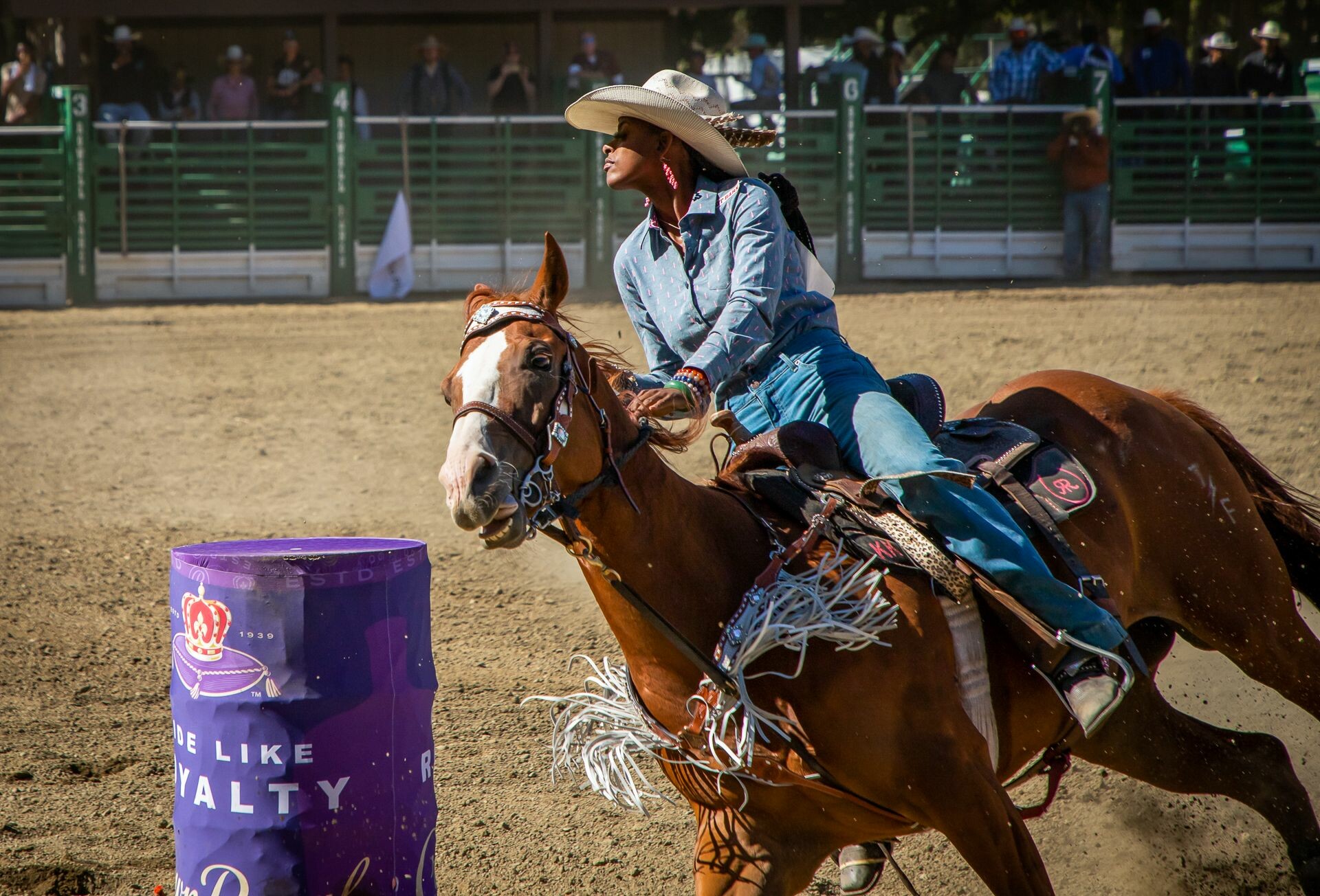
On July 9 and 10, KK Brinson competed at the Bill Pickett Invitational Rodeo (BPIR). William “Bill” Pickett was born in 1870 in Taylor, Texas. He invented the specialty rodeo event “bulldogging,” also known as steer wrestling, and is one of the most well-known Black cowboys in American history. The touring event named in his honor celebrates Black cowboy culture around the country.
Participating in another BPIR felt like a homecoming for Brinson, making it even more important to “show up and show out.” “When I was 13, that was the first rodeo I ever started with. That was the first rodeo I’ve ever seen. That was the first rodeo that I was ever welcome to,” Brinson said.
Read KK Brinson, a Black Cowgirl from Oakland, Gets Ready for Her Comeback
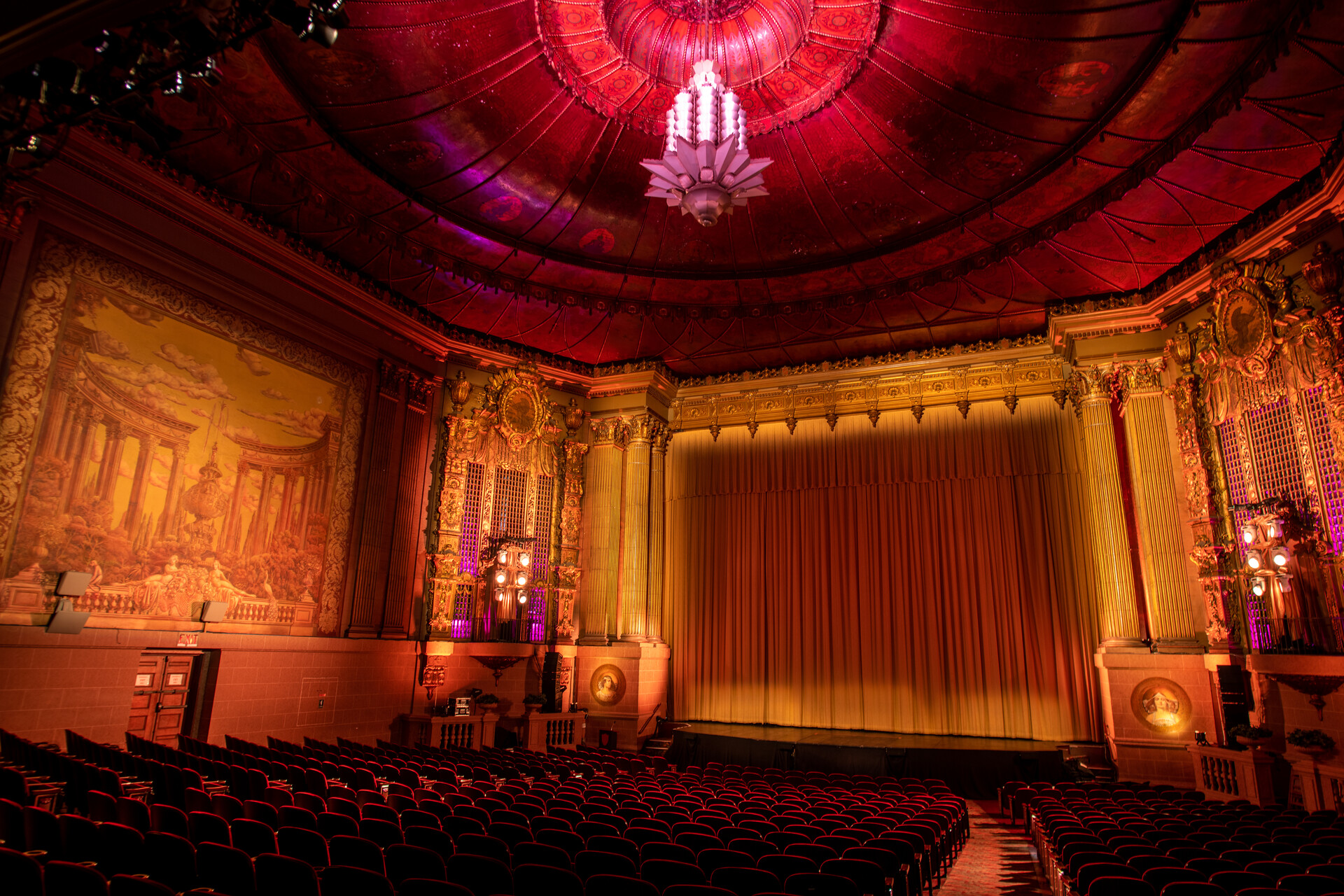
On Aug. 11, the Castro Theatre's new operators, the live-music promoters Another Planet Entertainment (APE), hosted a town hall to discuss the theater's future. The proposed restoration and renovation of the 100-year-old theater includes the ceiling, marquee, proscenium, dressing rooms, bathrooms, ADA compliance and more — upgrades widely welcomed. One part of APE's proposal, however, inspired over 5,000 opponents to sign a petition launched by the nonprofit Castro Theatre Conservancy, which names famous film directors like Martin Scorsese, Steven Spielberg and Francis Ford Coppola among its supporters.
The controversy comes down to the raked theater floor and the Castro’s traditional orchestra-style theater seating, which APE has proposed replacing with removable seats on multilevel, flat platforms more conducive to standing-room concerts.
Read There's Only One Castro Theatre. Why Change It Now?
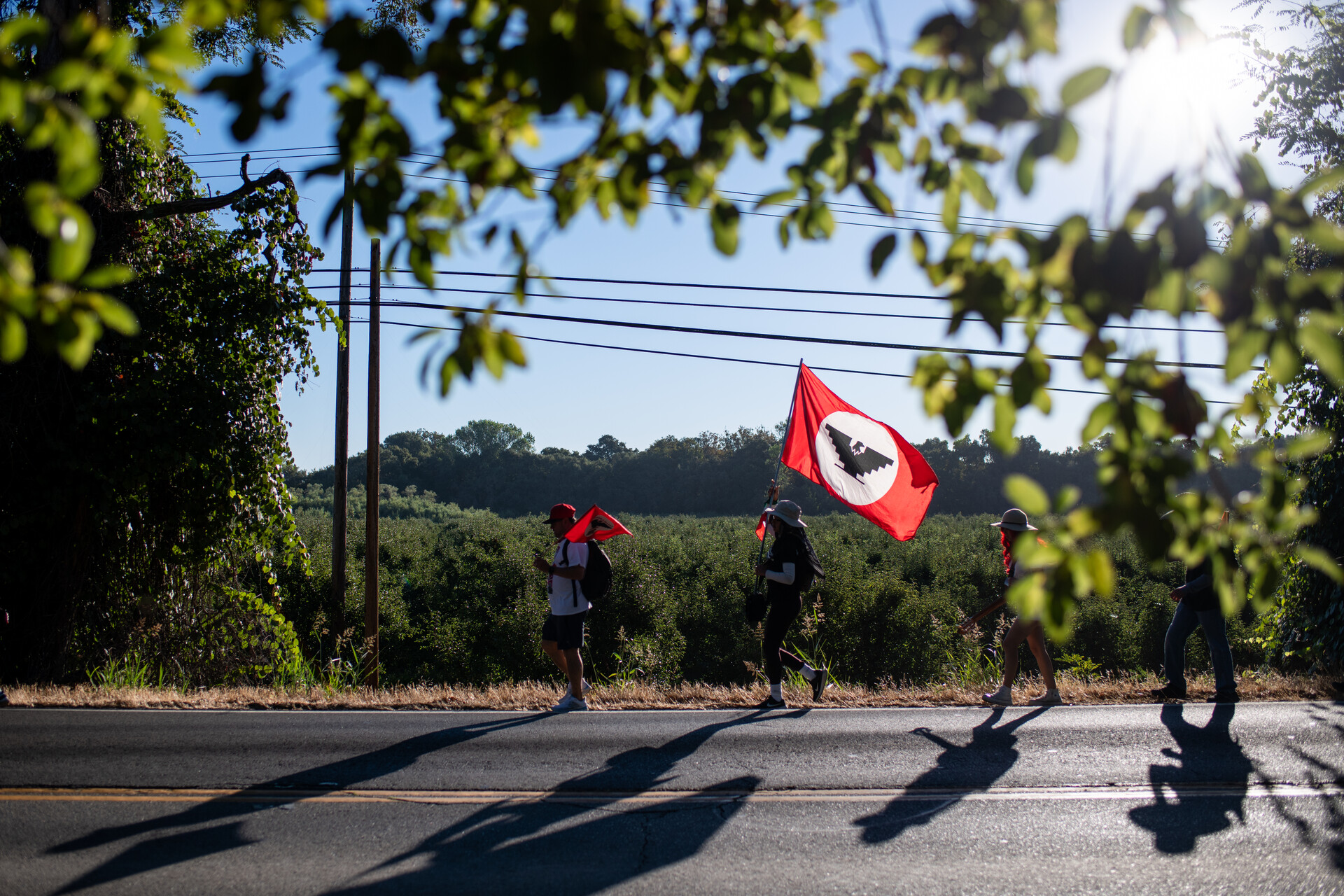
Thousands of farmworkers and their allies finished a march to California’s Capitol in Sacramento on Aug. 26, completing the last leg of a 24-day journey that began 350 miles away in Delano. The United Farm Workers union designed the march to pressure Gov. Gavin Newsom to sign a bill that would give farmworkers the option to vote by mail in union elections, mirroring the way Californians vote for candidates for political office.
Newsom initially announced his intention to veto the bill — one of the most contentious bills before the governor this year — but reversed course after President Joe Biden and Vice President Kamala Harris publicly backed it, pinning him in a difficult political position. However, Newsom approved the bill only after he, the United Farm Workers and the California Labor Federation agreed on clarifying language to be considered during next year’s legislative session to address his concerns around implementation and voting integrity.
Read Farmworkers' 24-Day March Culminates in Sacramento, Pressuring Newsom to Sign Union Bill
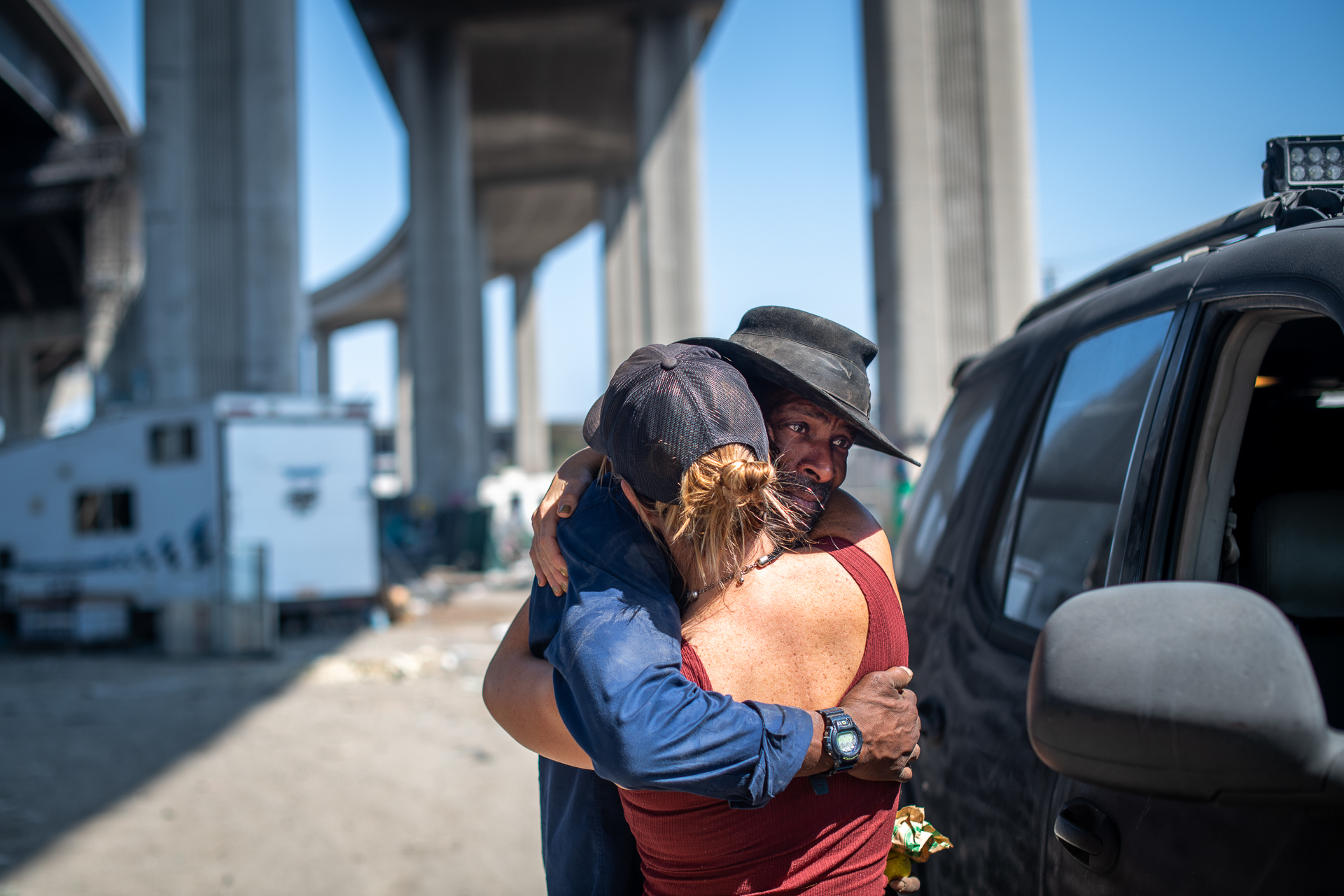
Emotions ran hot Sept. 8, as Caltrans began evicting residents from Oakland’s largest encampment of unhoused people. Some residents of the Wood Street encampment, with help from volunteers and activists, erected a makeshift barricade to block the only access road to the site.
Woody Guthrie’s folk anthem “This Land Is Your Land” blared from a windup amplifier as Oakland police and California Highway Patrol officers faced off with residents and supporters.
“You destroy people's lives, you take their belongings,” said Ben Murawski, 47, his voice quivering. “And how are they supposed to get back on their feet to do anything to move forward in life?”
Read Residents, Activists Decry Evictions at Oakland's Largest Homeless Encampment
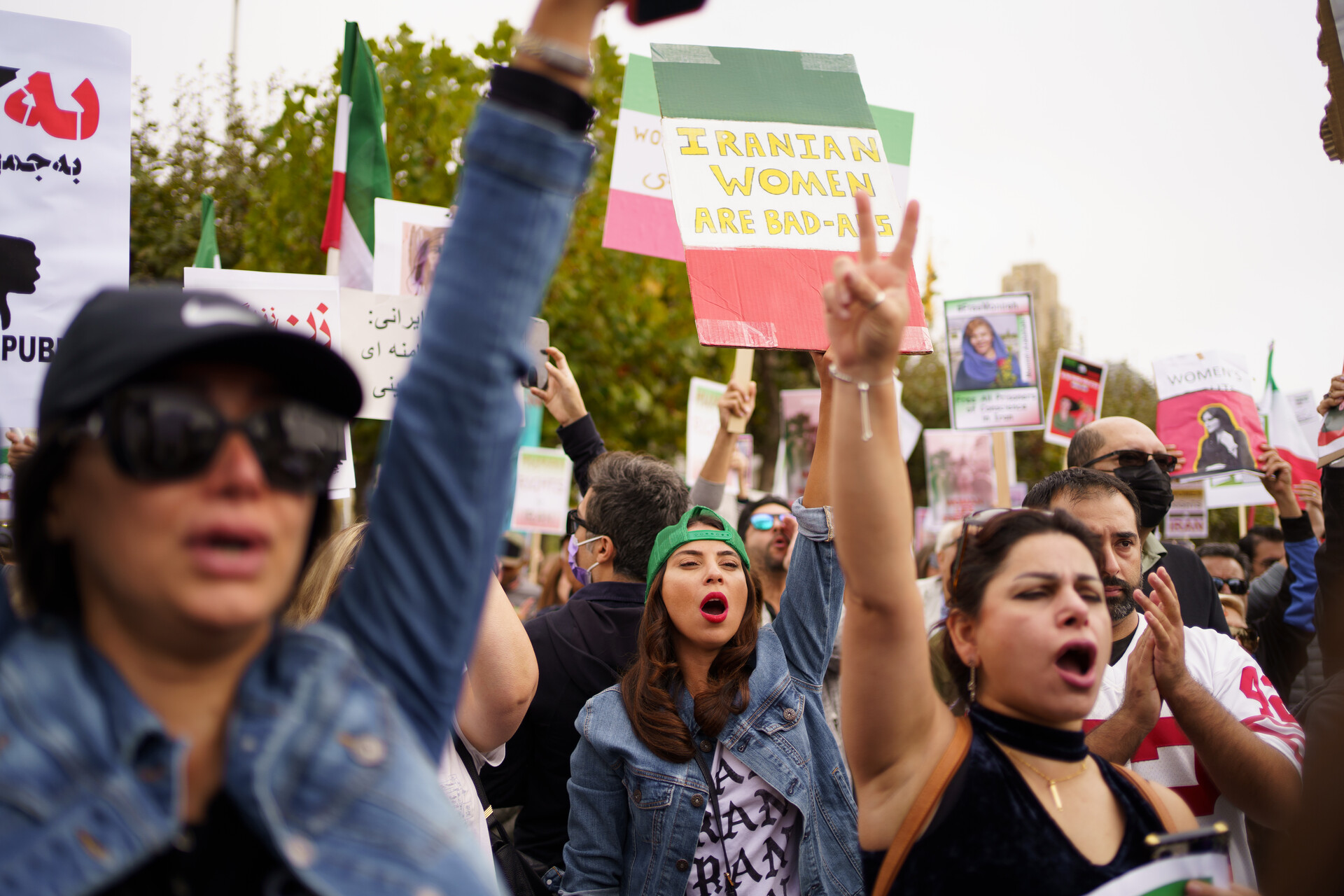
On Oct. 9, around 2,000 Iranian Americans joined a host of local politicians outside San Francisco's City Hall in support of the ongoing woman-led uprising in Iran.
"What is happening in Iran now is a lesson to the world of what happens when you let religious extremists take control," said state Sen. Scott Wiener at the protest. "We have to demand our leaders and our media, that we shed a light on this and that the entire world rally with the women of Iran to put an end to this regime."
Read Four Ways to Take Action in Solidarity With the People of Iran
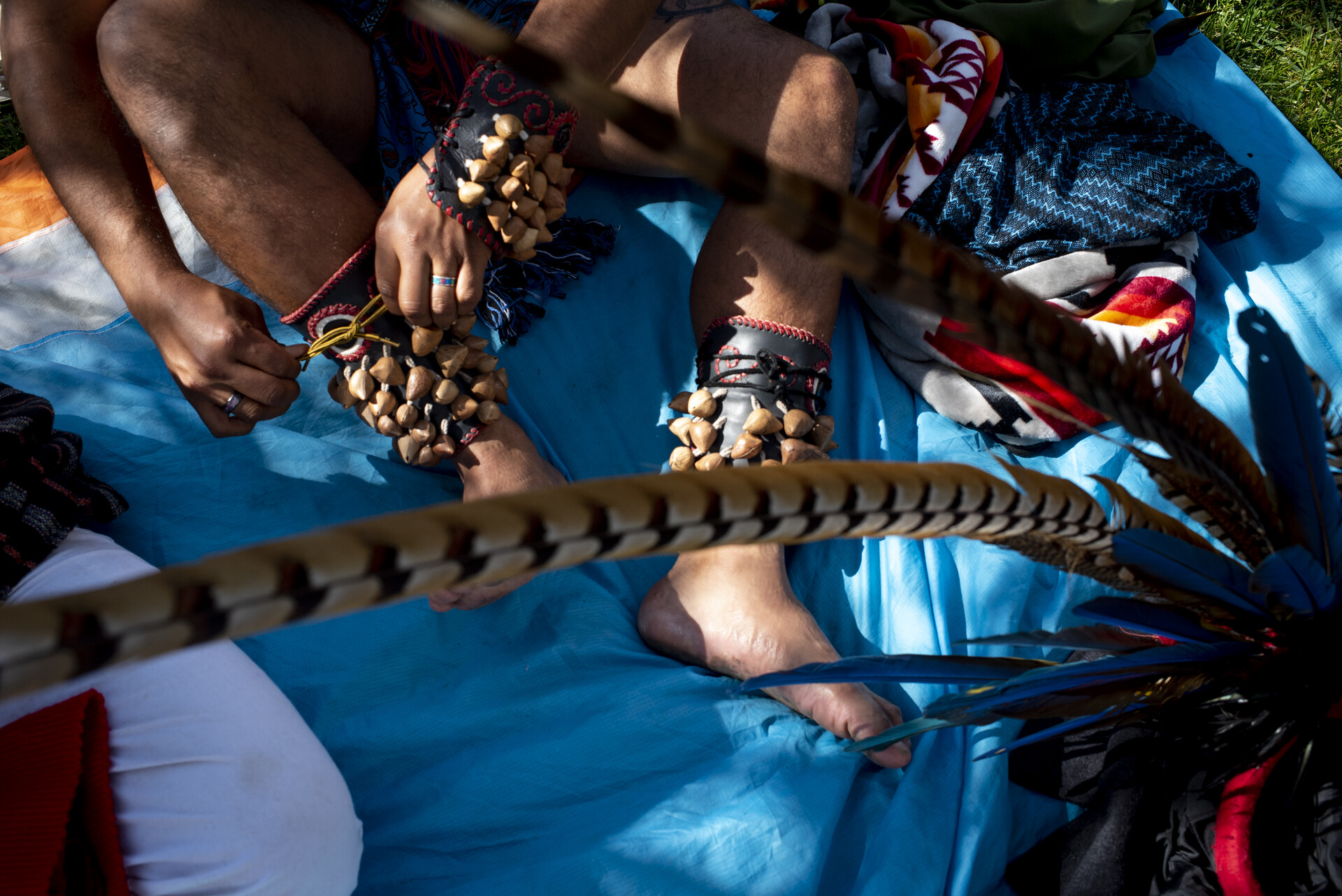
On Oct. 10, hundreds gathered in San Francisco's Yerba Buena Gardens to celebrate Indigenous Peoples Day with an afternoon of performance, community and creative expression. Xochitl Flores of San Francisco was one of them, photographed as he put ayoyotes on his ankles in preparation for performing a traditional Mexica dance at the gathering.
“Today is a celebration of our continued resistance, our solidarity with Indigenous people all over the world,” said event emcee Morning Star Gali. “It’s really beautiful … to see Indigenous people celebrated in this way. It’s about our ongoing resistance to colonialism.”
Read 'Our Ongoing Resistance': See Indigenous Peoples Day Celebrated in San Francisco
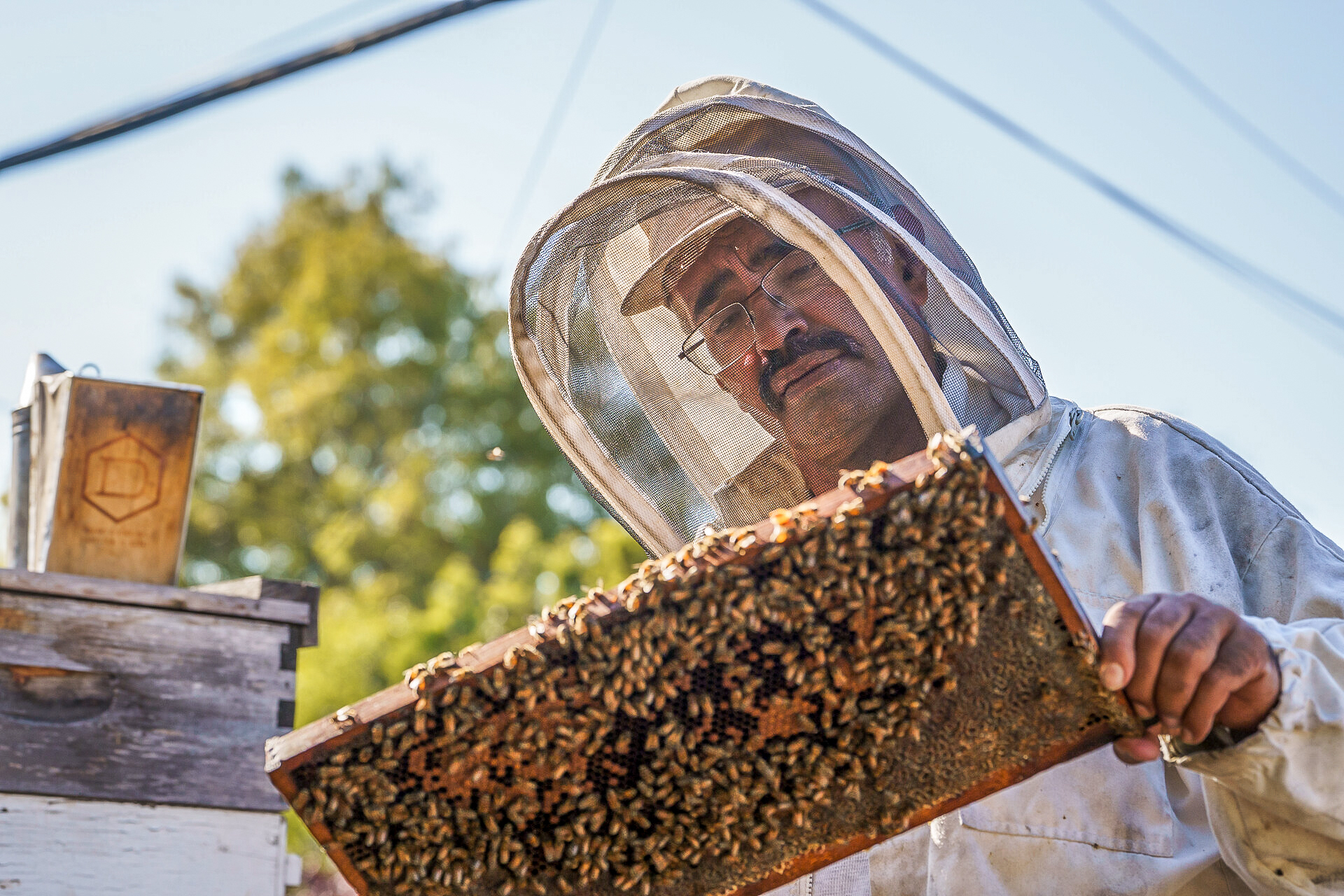
Khaled Almaghafi is the local beekeeper whom BART has tasked for the last five years with removing beehives and safely relocating their increasingly vulnerable insect inhabitants — while also getting some good honey out of the deal.
“BART came along and said, ‘Do you remove bees alive?’ I said, ‘Of course I do,’” said Almaghafi, who has tended bees in the Bay Area for nearly three decades and now takes care of, and harvests from, over a hundred beehives that he keeps in Oakland and Richmond. Almaghafi is paid per job and keeps the bees and honey he finds.
Read A Sweet Deal: This Oakland Beekeeper Rescues Bees From BART — Then Sells the Honey
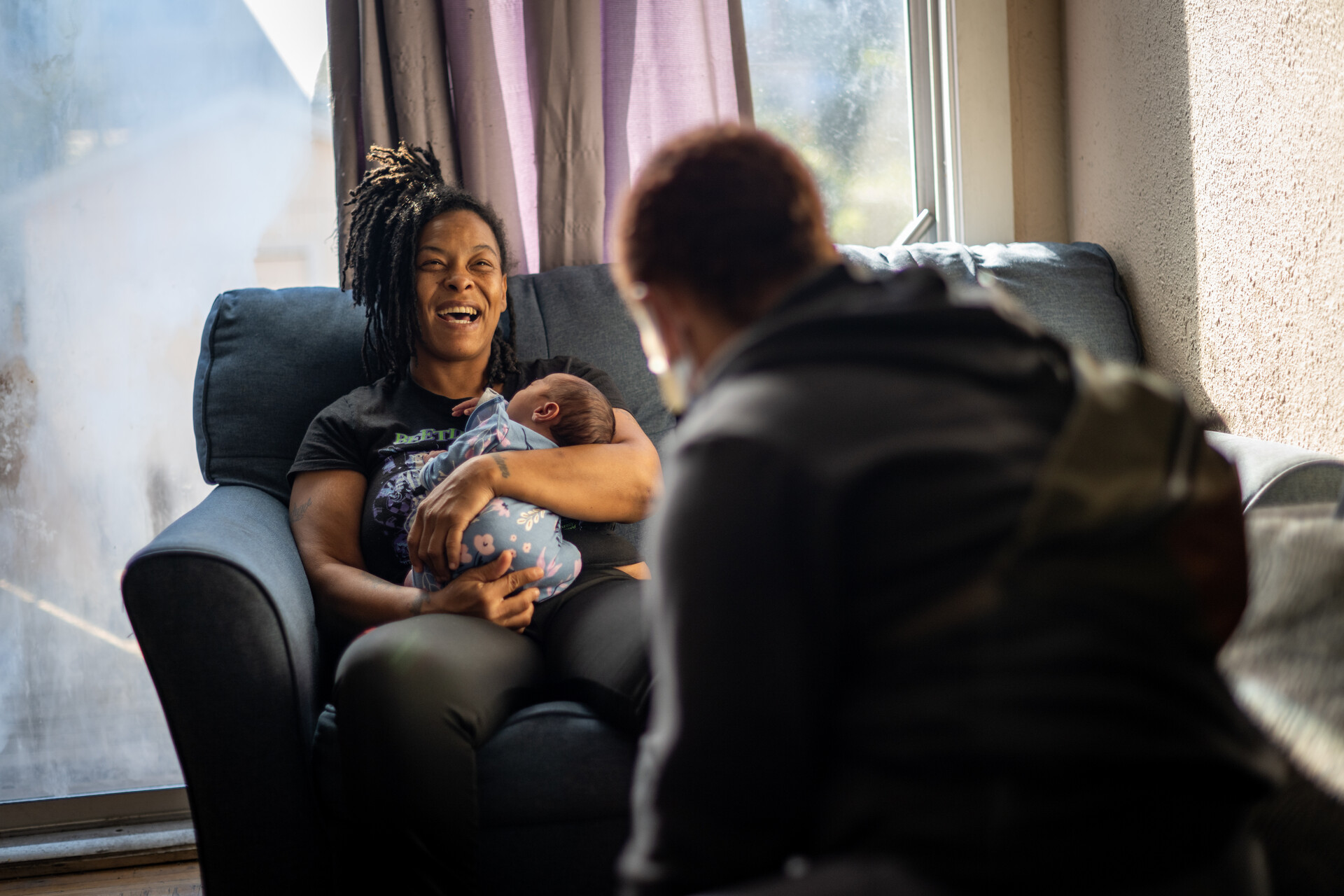
In San Francisco, Black birthing people make up half of the city’s pregnancy-related deaths, and Black children make up 15% of infant deaths despite representing just 4% of all births. City data also shows nearly 14% of Black infants are born prematurely compared with 7.3% of white infants.
Asmara Gebre, a nurse-midwife, founded One Love Black Community, a local group dedicated to improving Black people’s access to reproductive health care. Sabrina Hall is just one of those Gebre and her most dedicated volunteer, Cassandra Perkins — an outreach coordinator for the San Francisco Department of Public Health — have been supporting.
Read Diapers, Food and Cash: San Francisco Group Helps Black Families, One Delivery at a Time
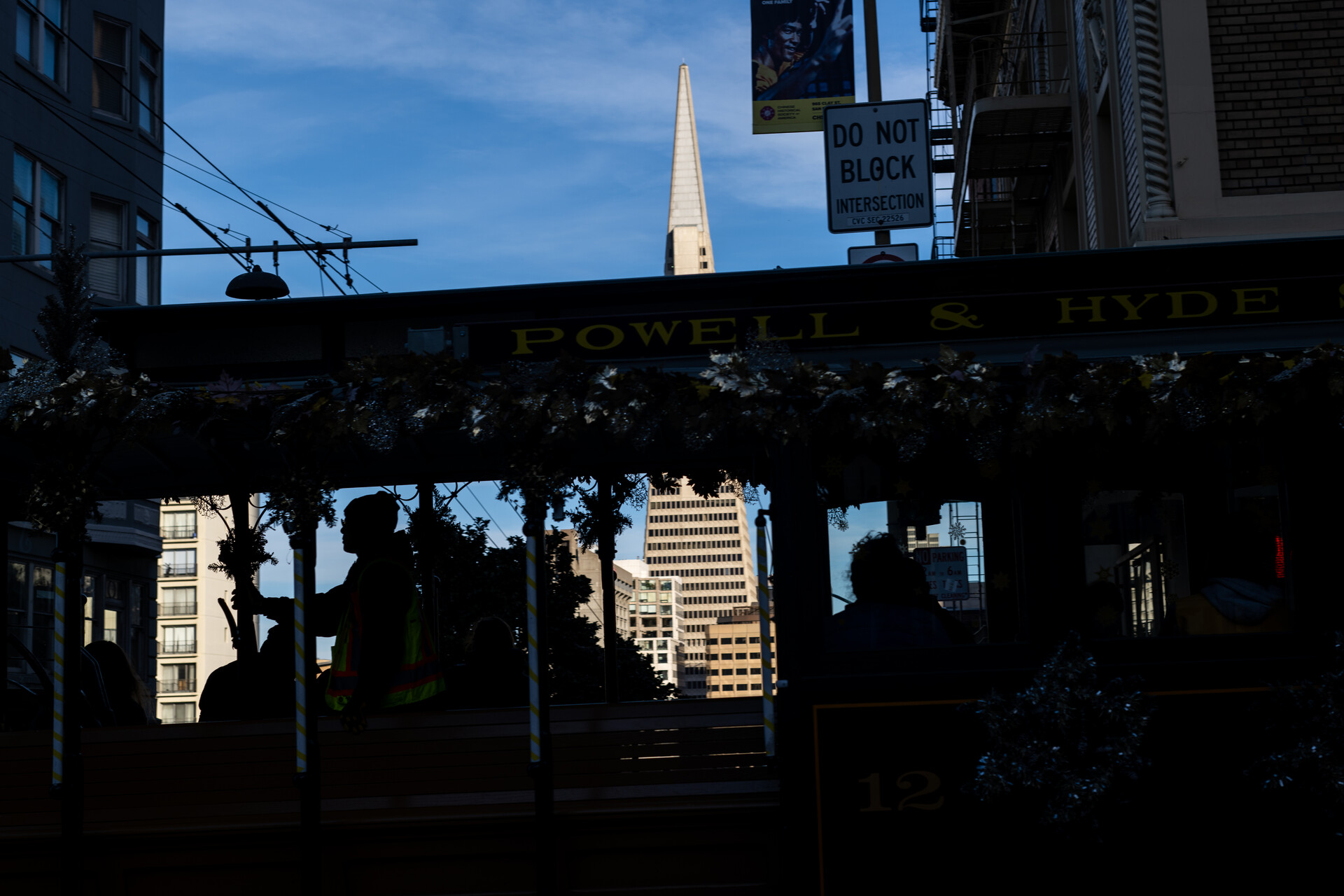
The Golden Gate Bridge. The Bay Bridge. Sutro Tower. Coit Tower. Perhaps even (whisper it) the Salesforce Tower. When it comes to instantly recognizable structures, San Francisco suffers no shortage. But if asked to pick their favorite, many people might go for a classic: the Transamerica Pyramid.
The Pyramid — officially known as the Transamerica Pyramid Center — first opened back in 1972, making it a half-century old this year. At over 850 feet high, back then it was the tallest building San Francisco had ever seen. It has over 3,000 windows, an exterior of white quartz, and an illuminated spire at its very top, like the star on top of a Christmas tree.
Read The Transamerica Pyramid at 50: From 'Architectural Butchery' to Icon
